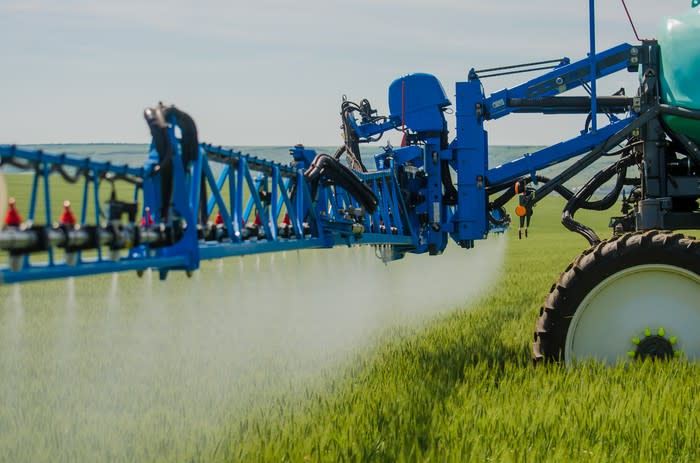Raven Industries Drops on Applied Technology Segment Struggles
Raven Industries (NASDAQ: RAVN) released fiscal second-quarter 2020 results on Thursday after the market closed. With echoes of the near-term headwinds that laced last quarter's underwhelming report, the company detailed broad-based revenue and earnings declines from each of its three business segments. A closer look at Raven's results shows the brunt of the blame can be placed on its Applied Technology business, where an unusually wet planting season in the U.S. negatively impacted demand for its industry-leading precision agriculture equipment.
With shares of the mini-industrial conglomerate down around 4% in after-hours trading right now, let's take a closer look at what Raven had to say about its Q2 performance.

IMAGE SOURCE: GETTY IMAGES.
Raven Industries results: The raw numbers
Metric | Fiscal Q2 2020* | Fiscal Q2 2019 | Change |
|---|---|---|---|
Revenue | $98.1 million | $102.7 million | (4.5%) |
Net income | $8.8 million | $13.7 million | (36.1%) |
Earnings per diluted share | $0.24 | $0.38 | (36.8%) |
DATA SOURCE: RAVEN INDUSTRIES. *FOR THE QUARTER ENDED JULY 31, 2019.
What happened with Raven Industries this quarter?
Raven Industries does not provide specific quarterly financial guidance. So, for perspective, the average analyst estimate called for higher earnings of $0.34 per share on revenue of $104 million.
By segment:
Engineered Films revenue declined 2.3% to $57.5 million, driven by end-market weakness in the geomembrane business and lower customer demand in the industrial market. Segment operating income fell 6.1% to $10.2 million.
Applied Technology sales dropped 9.9% to $27.4 million, as modest 3.4% international growth was offset by a 13.6% domestic decline due to challenging spring planting conditions, which resulted in several OEM plant shutdowns. Segment operating income dropped 44.8% to $4.8 million.
Aerostar segment sales tumbled 2.4% to $13.2 million, as lower aerostat sales (which tend to be inconsistent from quarter to quarter) offset 30% growth from in combined stratospheric balloon and radar product platforms. Segment operating income fell 23.7% to $2.9 million, due to lower aerostat sales, higher selling expenses, and higher R&D investments.
What management had to say
Raven Industries CEO Dan Rykhus stated:
End-market conditions impacting our Applied Technology division during the second quarter were significantly more challenging than expected. Because of this and other challenges experienced in the first half of fiscal 2020, we have updated our previous expectations of achieving year-over-year growth in both sales and division profit for the full-year in each division. [...] While we will not achieve the growth in sales and division profit in every division this fiscal year as we previously expected, we do expect a stronger second half sales performance for each division, relative to the prior year. More importantly, I firmly believe we are much better positioned today to face end-market challenges due to the investment discipline we maintained during the previous end-market challenges we experienced. Our disciplined approach to continual investment is supported by the confidence we have in our ability to improve our market-leading positions and drive long-term growth.
Looking forward
That said, Raven Industries also expects OEM machine production rates to improve in the second half, which should help Applied Technology sales and profit to increase for the rest of fiscal 2020 relative to the same year-ago period. Raven similarly anticipates Engineered Films sales growth on a year-over-year basis in the second half, as past investments to capitalize on key growth opportunities begin to yield fruit. Finally, Raven's Aerostar segment is inherently less predictable, but the company believes its increased R&D investments should leave it well positioned for longer-term growth.
Still, until Raven's near-term headwinds abate, shareholders probably shouldn't hold their breath for the company to live up to its longer-term goal for achieving annual earnings growth of at least 10%. And I suspect the stock will remain under pressure until Raven Industries shows more tangible progress even returning to modest sustained, profitable growth.
More From The Motley Fool
Steve Symington has no position in any of the stocks mentioned. The Motley Fool has no position in any of the stocks mentioned. The Motley Fool has a disclosure policy.
This article was originally published on Fool.com
